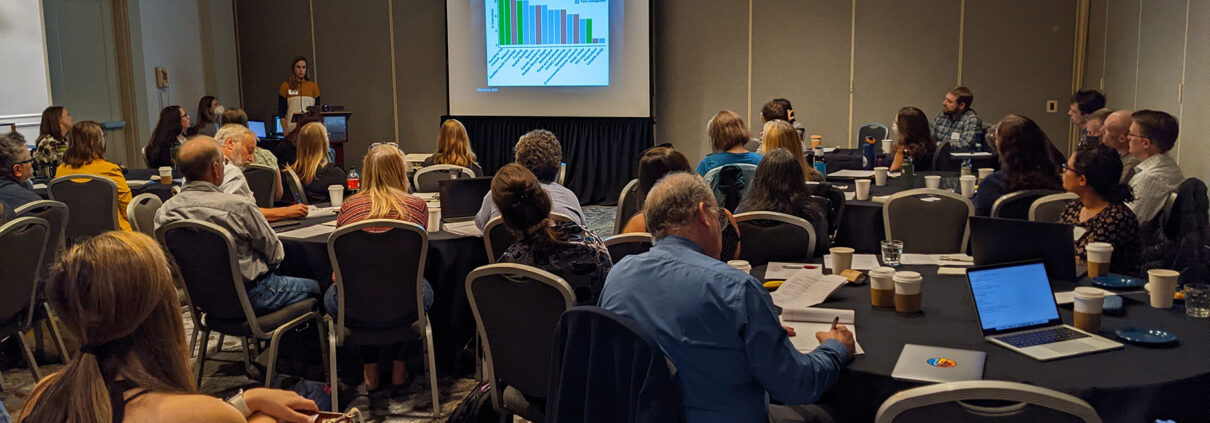In early October, I had the pleasure of participating in a West Coast Ocean Acidification and Hypoxia (OAH) Symposium, hosted by the International Alliance to Combat Ocean Acidification, in Portland, Oregon. There were nearly 60 people in attendance across four jurisdictions representing a diversity of academic institutions, monitoring networks, government programs, Tribal government and intergovernmental organizations, regional alliances, and international initiatives. Our goal was to reflect on strategies for implementing OAH Action Plans across the region, identify policy alignments, and outline regional recommendations for the Pacific Coast Collaborative over the coming years.
In addition to being one of my very first in-person convenings following the COVID pandemic, it was a great milestone to reflect back on OST’s decade of work to support state action on changing ocean chemistry. Ten years ago, ocean acidification was a new issue for managers and policymakers. In many of the early interviews I participated in with state agency staff, very few were aware of the issue, and those who did thought it was an intractable global problem. Now, California – alongside Oregon and Washington – is leading the nation on addressing climate and ocean change in our state waters. It was interesting to see the dialogue shift over the years from a focus on basic understanding of OA exposure and vulnerability (what do we know?), to today’s solutions-focused discussions (what can we do?), including exploration of ocean carbon dioxide removal strategies, water quality regulatory pathways, and fisheries management strategies.
I was proud to be a part of the early groundswell of OA action that has led to where the region is today. In 2013, OST convened the bi-national West Coast Ocean Acidification and Hypoxia Science Panel following massive oyster hatchery failures in Washington state. We produced a suite of products for decision-makers to inform alignment of regional OAH monitoring assets, support water quality regulation, advance understanding of species impacts and more. Since then, OST co-led the development of the State of California Ocean Acidification Action Plan and convened the California OAH Science Task Force to advise state government on continued action. This body of work has informed multi-million dollar investments in advancing management-focused research and led to the passage of two OA bills in the state legislature. Now, the State Water Resources Control Board is actively exploring appropriate water quality management levers, and our carbon accounting in coastal wetlands (blue carbon) habitats has rapidly advanced and is being incorporated into state climate policies.
Looking back on this work, I’m both proud and humbled to have played such a valuable role in the OAH science-to-policy pipeline. I started out as a graduate student studying the impacts of acidification on marine species, and grew into a role at OST that allowed me to contribute to management and policy change at the state, regional, and international levels. And while there is (of course) much more work to be done, it is important to stop once in a while to congratulate ourselves for these achievements as we look to the future.




